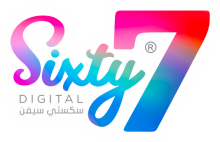Technology Stack
When planning the technology stack for a software project, it's essential to consider various components and services. Keep in mind that technology choices may evolve, so it's essential to stay updated on the latest best practices and tools in the PHP and AWS ecosystems. Here's a detailed description of the technology stack:
-
Programming Language: PHP
- PHP (Hypertext Preprocessor) is a widely-used server-side scripting language, well-suited for web development.
- Choose a version of PHP that aligns with your project requirements. The latest version of PHP to be used for long term compatibility.
-
Web Framework:
- Depending on the complexity of our project, we shall consider using a PHP web framework like Laravel, Symfony, or CodeIgniter. These frameworks provide structured architecture, built-in features, and make development more efficient.
-
Web Server: AWS Elastic Beanstalk, Apache, or Nginx
- AWS Elastic Beanstalk is a fully managed service that simplifies the deployment of PHP applications. It automatically handles capacity provisioning, load balancing, and application health monitoring.
- Alternatively, we can set up traditional web servers like Apache or Nginx on AWS EC2 instances if we prefer more manual control.
-
Database: MySQL
- MySQL is a robust and widely-used relational database management system (RDBMS) that integrates seamlessly with PHP.
- Set up a MySQL database instance on AWS RDS (Relational Database Service) for managed database hosting. This service provides automatic backups, scaling options, and other optimizations.
-
Object Relational Mapping (ORM): Optional
- Consider using an ORM library like Eloquent (for Laravel) or Doctrine (for Symfony) to simplify database interactions and improve code maintainability.
-
Frontend Technologies: HTML, CSS, JavaScript
- Use standard web technologies for frontend development.
- Consider incorporating a frontend framework or library such as React, Vue.js, or Angular if our project requires dynamic and interactive user interfaces.
-
Version Control: Git
- Utilize Git for version control to track changes, collaborate with team members, and manage the codebase effectively.
-
Cloud Infrastructure: AWS (Amazon Web Services)
- AWS provides a wide range of services that can be leveraged to host, deploy, and scale your PHP application.
- Key AWS services include EC2 for virtual servers, RDS for managed databases, Elastic Beanstalk for easy application deployment, S3 for storage, and more.
-
Containerization: Docker (Optional)
- Docker can be used to containerize your application, making it easier to deploy and manage across different environments.
-
Monitoring and Logging: AWS CloudWatch, New Relic, or similar
- Implement monitoring and logging solutions to track application performance, detect issues, and ensure optimal system health.
-
Security Measures: HTTPS, AWS IAM, and WAF
- Enforce HTTPS for secure data transmission.
- Implement AWS Identity and Access Management (IAM) for access control.
- Consider using AWS Web Application Firewall (WAF) for additional security against web exploits.
-
Continuous Integration/Continuous Deployment (CI/CD): AWS CodePipeline, Jenkins, or GitLab CI
- Implement CI/CD pipelines to automate testing, build, and deployment processes, ensuring a smooth development workflow.
